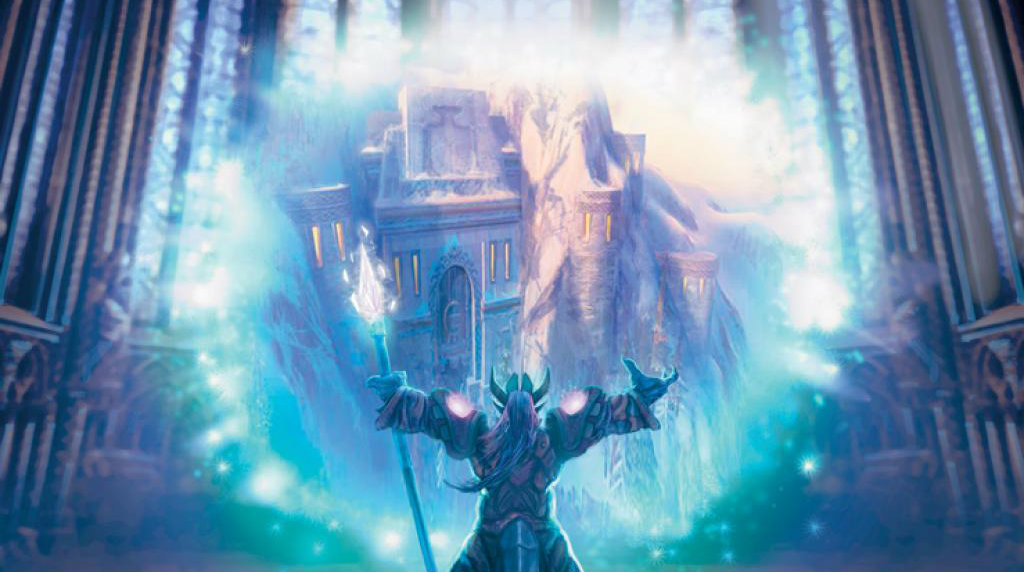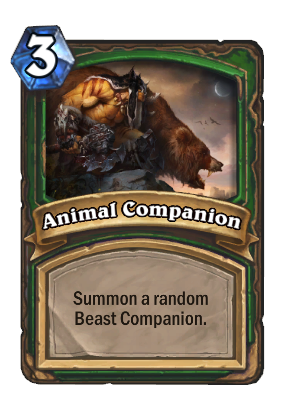What's wrong with competitive Hearthstone?
The finger of blame should be pointed at the variation between how cards generate value.

What should Blizzard do differently?
One obvious solution to the value problem is to avoid cheating Mana costs, which means saying goodbye to cards like Unstable Portal that might randomly cheese the game. But that would limit design space around cards with random elements that alter the board state, like Piloted Shredder or any of the new Portal cards. However, there’s a workaround for those which avoids the feast-or-famine approach, and introduces decision-making. The answer is to use more restricted ranges of variance.
Two good examples are Animal Companion and Ysera. With those cards, you're aware of what you could get—as is your opponent—which enables you to prepare for different outcomes. Ysera is a better example, because you can’t play the card it draws until the next turn, which gives your opponent time to react. Animal Companion is worse because it can be played earlier in the game, and the difference between the creatures is stark and immediate.
Applying the same solution to other cards, Piloted Shredder should have been a minion that could only drop from a specific list of pilots. So no more Doomsayers or Millhouses. The same solution could also be applied to the new Portal cards, with a restricted list of possibilities rather than an entirely random card of a certain cost.
Reduce the raw value

All three companions are worth more than 3 Mana. (As if it ever isn't Huffer anyway.)
In other cases, it’s pretty clear that the independent value provided by a card is just too high. Call of the Wild, for instance, generates more than 9-Mana’s worth of value for the price of only 8. (In fact, the Companions are all individually worth more than their 3-Mana cost, which puts its value at about 12 mana if priced fairly.) The opportunity cost of playing Animal Companion is its unreliability, which is removed entirely by Call of the Wild.
Finally, if cards like Yogg-Saron are to exist, their effect needs to be designed so that they aren’t competitively viable. For example, if Yogg’s spells were actually cast completely randomly, so that Arcane Intellect could draw your opponent cards rather than just you, it might be acceptable. Another less severe change would be for the Yogg effect to end immediately if Yogg gets killed. Regardless of the exact change needed, it’s clear that a card which effectively reads, “try to randomly steal a win if you’ve played some spells previously”, isn’t good for the long-term health of the competitive game.
Final thoughts
There are of course other issues facing competitive Hearthstone. For instance, spell-based board clears have failed to keep pace with the strength of minions, which has led to the game being dominated by high-value creatures trading until one side of the board snowballs. Or as the community has dubbed it: Curvestone. There have actually only been about seven AoE spells released since vanilla, half of which were restricted to Priest, and almost all of which were ineffective in some way. Compounding things, one of the best board clears—Blade Flurry—got nerfed into the ground. When minions are just better than spells, dropping them on curve becomes ever more important.

Jesse Marczyk is an avid card game player, with over 20 years of experience in Magic: The Gathering and, more recently, as a consistent legend rank player in Hearthstone. Jesse is also a psychology researcher and runs his own science blog at popsych.org.
Nonetheless, the issue of excessive value generation is so significant that addressing it, even for a handful of cards, would go a long way towards making tournaments more interesting to watch again, and enable the best players to have win rates that reflect the time they invest in the practice. There’s no reason to watch a tournament just to see who can high-roll Yogg more often. That doesn’t create an interesting story, because every Hearthstone fan knows it was a fluke and there’s nothing to be learned from it.
Keep up to date with the most important stories and the best deals, as picked by the PC Gamer team.
Cards that can cheat the game (randomly or not) need a long look at from the design team if the competitive integrity of constructed Hearthstone is to be maintained. I understand that not all cards are designed for competitive play, but it's vital that more consideration is given to this side of the game. Without a competitive scene in which it feels like the stakes matter—where good players are consistently rewarded and bad players punished—there is little incentive for casual players to dream about self-improvement or engaging with the game on a more serious level. That feeling of progress, or at least the potential for it, is vital to the long-term health of Hearthstone.

